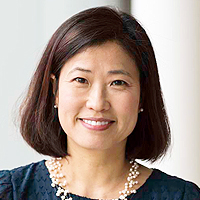The effect of NLP-based approach to teaching surgical procedures to senior OBGYN residents
Published on: 4th January, 2021
OCLC Number/Unique Identifier: 8886000867
Each individual has a unique way of learning which is based on personal background [1]. Neuro Linguistic Programming is an ideology of communicating with an individual. It can be applied in social relations like teaching fields [2]. Each medical student deals with a set of new information in his unique way. For example with regard to the following text on vacuum extraction, one learner focuses on definition, while the other focuses on spelling, and the third one just on shapes [3] (Figures 1-3).
Contemporary learning or E-Learning in physiotherapy, pre and post COVID-19: Short communication
Published on: 18th May, 2020
OCLC Number/Unique Identifier: 8605488147
Since December 2019, an outbreak of novel corona virus disease was reported in Wuhan, which has subsequently affected more than 160 countries worldwide. The ongoing outbreak has been declared as a pandemic by WHO, a global public health emergency. Several countries are successfully fighting with the pandemic by taking strict measures like nationwide lockdown or by sequestering the areas that were suspected of having risk of community spread. The corona virus pandemic has upended our educational system worldwide [1-3].
The academic calendar all over the world has been disturbed as a result of lockdown. Even after lockdown it would take probably many more months for universities, colleges and schools to reinstate. Caught in the turmoil, some parts of urban Indian education system have turned towards delivery of education via internet or online education. The NCAER skills report 2018 discussed the immense potential of online learning, conversely as complementary to more traditional methods. Centuries old, lecture based approaches, institutional biases, and outmoded classrooms changed. Covid 19 has become an impetus for educational institutions worldwide to search for innovative solutions in a relatively short duration. In the prevailing situation, online education is turning out as an alternative to traditional modes [2,4,5].
Contemporary/E-learning prepares students across all curriculum and learning stages with skills and potential to flourish in a rapidly changing and interlinked world. It connects students and engages their sense of inquisitiveness. E-teachers know and understand the needs and talents of their students. They are trained, flexible and select from a wide range of effective teaching strategies based on need. The new learning environment and resources galvanize students to be leaders of their independent learning. Thus students collaborate and use critical and creative thinking to solve complex problems and become apprehensive and sentient global citizens [4-6]. In physiotherapy, apart from traditional institution based learning, there implies a need for technological inputs and E-learning as a need to develop critical, creative thinking and reasoning. These technological arrays do provide better concepts and understanding regarding academics and practice [6]. As physiotherapy is advancing and growing in academics, research and practice, the need for an interlinking platform through which learning becomes unconditional and globally accessible was never addressed. Covid- 19 lockdown and strategies imposed us to think apart from institutional mode, ostensibly got a worldwide acceptance.
Research suggests that online learning has been shown to increase retention of information, and take less time. On average, students retain 25% - 60% more information when learning online compared to only 8% - 10% in a classroom. E-learning requires 40-60% less time to learn and understand than in a traditional setting, because students can learn at their own pace, re-reading, skipping or accelerating through concepts as they choose. Contemporary learning or E-learning at present situation is intended to have the desired effect such as physical distancing, schedule flexibility, cost effective, fast learning, course variety, boost memory, reasoning and innovative teaching [2,4].
Adoption of online learning will continue to persist post pandemic, and how such a shift would impact the worldwide education market should be studied. Some believe that the unplanned and rapid move to online learning with no training, insufficient bandwidth, and inadequate preparation will result in a poor user experience that is deleterious to sustained growth [5,8]. The current crisis has acted as a thwack to encourage digital education among physiotherapy institutions. However, to achieve its prospective in the long run, physiotherapy institutions and universities should implement a digital platform, training as well as a curriculum regulation. “We believe that, the integration of information technology, E-learning in education will be further accelerated and eventually transpire to an integral component of physiotherapy education and practice”.




